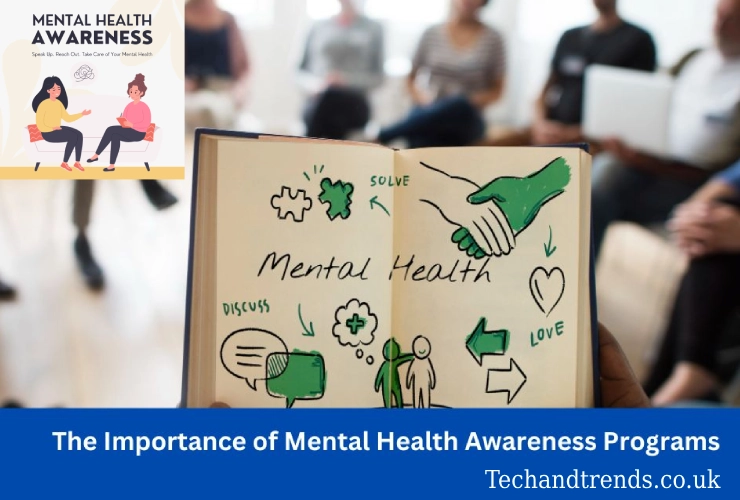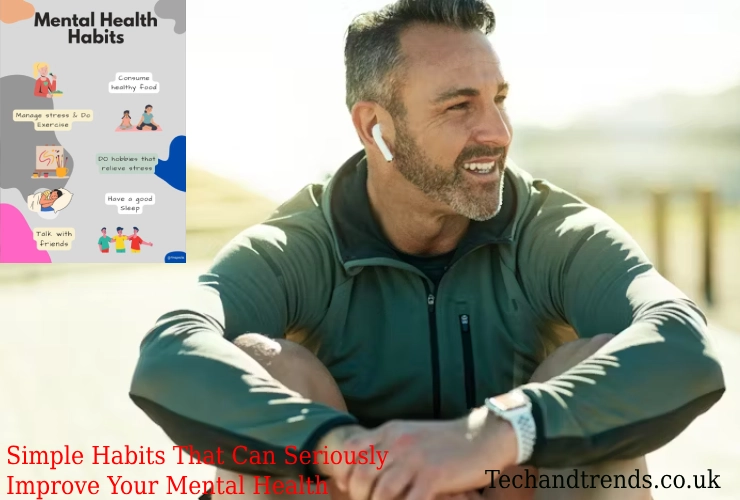May marks the annual Mental Health Awareness Month, a time dedicated to promoting mental health and well-being through awareness and education. Since its founding in 1949 by Mental Health America, Mental Health Awareness has grown into a global movement.
In 2025, the theme “Turn Awareness into Action” urges us not only to understand mental health challenges but to take meaningful steps toward change. As new data reveals, mental health issues are more prevalent than ever, especially among youth, highlighting the urgent need for action and support.
Understanding the Importance of Mental Health Awareness
Mental health is foundational to every aspect of our lives. It shapes how we think, feel, act, handle stress, relate to others, and make choices. Good mental health isn’t just the absence of illness-it’s about maintaining a balanced emotional, psychological, and social state. When mental health is prioritized, individuals are better equipped to face life’s challenges, build strong relationships, and contribute positively to society.
Globally, mental health disorders affect about 970 million people, or 1 in 8 individuals, with anxiety and depression being the most common. In the U.S., nearly 1 in 5 adults experience a mental illness each year, and in the UK, it’s 1 in 4 adults. These statistics underscore the universality of mental health challenges and the necessity for widespread awareness and education.
Raising mental health awareness leads to:
- Greater understanding and compassion for those affected
- Reduced stigma and discrimination
- More inclusive, supportive communities
- Increased likelihood that individuals will seek help early.
How Stress Affects the Youth of Today
Today’s youth face unprecedented stressors, from academic pressures and social expectations to economic uncertainty and the pervasive influence of social media. According to Mental Health America’s 2024 screening data, 40% of people screened were under 18, and nearly half of these youth reported frequent suicidal thoughts. This is a stark reminder that mental health struggles often begin early and can have life-altering consequences if unaddressed.
Common sources of stress in young people include:
- Academic workload and performance anxiety
- Social pressures, bullying, and peer comparison
- Family dynamics and expectations
- Uncertainty about the future
- Exposure to global crises and negative news cycles
Chronic stress in youth can manifest as anxiety, depression, irritability, withdrawal, and even physical symptoms such as headaches or stomachaches. Without intervention, these issues can escalate, impacting academic achievement, relationships, and long-term well-being.
Breaking the Stigma Around Mental Illness
Despite increased awareness, stigma remains a significant barrier to mental health care. Many people still hesitate to talk about their struggles or seek help due to fear of judgment or discrimination. This stigma is often rooted in misconceptions, such as viewing mental illness as a personal weakness or something to be ashamed of.
Breaking the stigma involves:
- Open conversations about mental health in schools, workplaces, and communities
- Sharing personal stories of struggle and recovery
- Challenging stereotypes and misinformation
- Promoting the message that mental health conditions are common and treatable
When stigma is reduced, more individuals feel safe to seek help, leading to earlier intervention and better outcomes.
Simple Habits to Improve Your Mental Well-being
Small, consistent habits can have a profound impact on mental health. As more Americans make mental health resolutions, the most popular strategies include:
- Exercise: Physical activity is proven to boost mood and reduce symptoms of anxiety and depression. In 2025, 63% of those making mental health resolutions plan to exercise more.
- Meditation and Mindfulness: Practicing mindfulness, deep breathing, or meditation can help manage stress and promote emotional balance (44% plan to meditate).
- Spending Time in Nature: Nature exposure, or “forest bathing,” is linked to reduced stress and improved mood (46% aim to spend more time outdoors).
- Journaling: Writing about thoughts and feelings can provide clarity and emotional release (29% plan to journal).
- Taking Social Media Breaks: Limiting social media use can reduce anxiety and improve self-esteem (30% plan to take breaks).
- Seeking Professional Help: Seeing a therapist or counselor is an important step for those experiencing persistent symptoms (31% plan to see a therapist).
Other beneficial habits include maintaining a regular sleep schedule, eating nutritious foods, staying connected with supportive people, and practicing gratitude.
The Role of Family Support in Mental Health
Family support is a crucial protective factor in mental health, especially for children and teenagers. An open, understanding, and non-judgmental family environment can:
- Encourage honest conversations about feelings
- Provide emotional and practical support during difficult times
- Help identify early signs of distress
- Facilitate access to professional help when needed
Families that prioritize empathy, active listening, and consistent support foster resilience and help young people navigate life’s challenges more effectively.
Common Signs of Emotional Distress in Teenagers
Recognizing emotional distress early is key to effective intervention. Common signs in teenagers include:
- Withdrawal from friends, family, or activities
- Sudden changes in mood, behavior, or academic performance
- Excessive irritability, anger, or sadness
- Changes in eating or sleeping patterns
- Loss of interest in hobbies or previously enjoyed activities
- Risk-taking behavior or substance use
- Expressions of hopelessness or suicidal thoughts
If you notice these signs, approach the teenager with empathy and concern, and encourage them to talk about what they’re experiencing. Early support can make a significant difference.
Creating Safe Spaces for Open Conversations
Safe spaces-whether at home, school, or in the community-are essential for fostering open dialogue about mental health. To create a safe space:
- Listen without judgment or interruption
- Validate emotions and experiences
- Maintain confidentiality when appropriate
- Encourage questions and curiosity about mental health
- Offer support and resources without pressure
When young people feel safe to express themselves, they’re more likely to seek help and develop healthy coping strategies.
Empowering Young Minds Through Education and Care
Education is a powerful tool for mental health empowerment. Integrating mental health education into school curricula helps young people:
- Understand the importance of mental well-being
- Recognize signs of distress in themselves and others
- Learn coping skills and resilience strategies
- Know where and how to seek help
Schools, parents, and community organizations can work together to provide workshops, peer support programs, and accessible resources that empower youth to care for their mental health proactively.
Why Early Intervention Can Change Lives
Early intervention is critical in mental health care. Addressing issues at the first sign of trouble can:
- Prevent conditions from worsening
- Reduce the risk of long-term complications
- Improve recovery outcomes
- Lower the risk of self-harm or suicide
Mental Health America’s 2024 data shows that nearly 80% of screeners had moderate to severe symptoms, yet many still delay or avoid seeking help[6]. Early support-whether through counseling, peer support, or family involvement-can change the trajectory of a young person’s life.
Social Media’s Impact on Mental Health in Youth
Social media is a double-edged sword for today’s youth. While it offers opportunities for connection and self-expression, it also presents risks such as:
- Cyberbullying and online harassment
- Unrealistic comparisons and body image concerns
- Exposure to negative or distressing content
- Disrupted sleep patterns due to excessive use
Recent trends show that many young people are recognizing these risks and taking intentional breaks from social media to protect their mental health. Parents and educators can support healthy social media habits by:
Turning Awareness into Action: Steps for Change
Awareness alone is not enough. The 2025 Mental Health Month theme challenges us to turn understanding into action. Here’s how individuals, families, schools, and communities can make a difference:
- Educate Yourself and Others: Stay informed about mental health issues and share knowledge within your circles.
- Advocate for Mental Health: Support policies and initiatives that increase access to mental health care and resources.
- Support Those Struggling: Offer empathy, encouragement, and practical help to friends or family members in need.
- Prioritize Self-Care: Model healthy habits and make mental well-being a daily priority.
- Create Inclusive Environments: Foster spaces where everyone feels valued, respected, and safe to share their experiences.
Conclusion
Mental Health Awareness is essential in today’s world, especially as mental health challenges continue to rise among youth. By fostering open conversations, breaking stigma, and encouraging early intervention, we can empower young minds to thrive and build resilience. Simple habits and strong family support play a crucial role in maintaining mental well-being and creating safe environments for growth.
Ultimately, turning Mental Health Awareness into meaningful action benefits individuals and communities alike. Through education, compassion, and proactive care, we can change lives, reduce suffering, and promote a healthier, more understanding society for generations to come.


Comments are closed.